Jacques P. "Jack" Lott (b. 15 Jul 1920 d. 12 Aug 1993) - Writer, gun crank and inventor of the .458 Lott cartridge. Author of Big Bore Rifles. Friend of Frederick Russell Burnham's family and owned many of his guns. Jan Libourel has said that it was because he was "he was old, alone and in failing health".
- Buff Busters by Kevin E. Steele
- Why Magazine Big Bore Rifles are Best Part 1 by Jacques P. Lott
- Why Magazine Big Bore Rifles are Best Part 2 by Jacques P. Lott
- Don't Send Your Guns to an Early Grave by Jack Lott
- Big Bore Rifles by Jack Lott
 Captain Edward Carthart "Ned" Crossman (1889 - 1939)- was a very prolific gun writer and the only writer of his era to make a living of writing for magazines. He was the dean of gun writers for the period from WW1 to his death, which is impressive as the era included Whelan, Hatcher & Klephart. His first magazine contribution was in 1904 and he was a regular in "Arms and the Man" and its successor "American Rifleman" from that point.
Captain Edward Carthart "Ned" Crossman (1889 - 1939)- was a very prolific gun writer and the only writer of his era to make a living of writing for magazines. He was the dean of gun writers for the period from WW1 to his death, which is impressive as the era included Whelan, Hatcher & Klephart. His first magazine contribution was in 1904 and he was a regular in "Arms and the Man" and its successor "American Rifleman" from that point.Born in Iowa, son of Leander C. Crossman whose was born in 1853, soon after his parents John Alexander Crossman and wife Mary Cathcart emigrated from Pennsylvania to Iowa in about 1850. Leander was raised on the western frontier and, like most boys of this era and his age, learned to use firearms early in life to gather food, provide protection, and on occasion, recreation. By the time he had grown to adulthood he had become a well known rifleman of his day, making his name as a member of the Muscatine Guards-Company C of the 9th Regiment of the Iowa National Guard.
"Ned" followed in his father’s footsteps as a rifleman. The family moved the California where Ned first came to public notice, at the relatively young age of 23, when his first contribution to Arms and the Man, the predecessor of the National Rifle Association’s flagship publication, The American Rifleman was published in 1904. He was a prolific writer, with a fund of information and interests that was both broad and deep, allowing him to write for a wide variety of magazines from outdoor publications to Scientific American. Once he had tasted the life of a free lance outdoor writer he never looked back and never really had any other main means of employment to support his family.
He was very active in the establishment of the Los Angeles Rifle and Revolver Club and served for many years as its secretary. He met and married Blanche Brown. Their only child Edward Bishop Crossman, called Jim for reasons unknown, was born on July 8, 1909. The family’s domestic life was a bit out of the ordinary as the trio often left their base in Los Angeles to roam the wild back country of the west ranging from New Mexico to Oregon in pursuit of game, adventure, and material for Ned’s columns.
April 6, 1917 General Peyton March, Chief of Staff of the Army, signed orders creating “The Small Arms Firing School of Instruction of Officers and Enlisted Men in Rifle and Pistol Shooting” with Lieutenant Colonel Morton Mumma as commandant. In recognition of his skill and knowledge as a marksman Crossman was ordered to active duty as a captain where he would join the great smallbore rifleman T.K. “Tackhole” Lee, long range specialists the likes of William Leusher and James Keogh and a host of others at Camp Perry, Ohio. After the war, Crossman stayed in the Army while still penning articles for the popular outdoor press. He was recognized for his technical knowledge and writing skill and so, in 1919, detailed to Daytona Beach, Florida to serve under Lieutenant Colonel Glenn P. Wilhelm in checking the range tables of the 30 caliber M1 cartridge and determining its actual maximum range. Crossman was able to publish the program and conditions for the first smallbore national matches in the June 28, 1919 Arms and The Man.
Crossman had been mustered out of the Army soon after his tour at Daytona when it was discovered that he had developed stomach ulcers, but his attachment to his days in the service were so strong that he would often use the honorific of ‘captain’ in the ensuing years. He branched off into a relatively new field of firearms forensics. He soon became associated with the Bureau of Forensic Ballistics, eventually dealing with over 200 cases. When his son Jim graduated from California Institute of Technology in 1931 he joined his father in his practice.
On the 18th of October in 1938 Ned was driving home through a blinding dust storm. In the limited visibility their auto was broadsided by a truck near Indio and Ned, unhurt, was horrified to see that Blanche had suffered a broken neck. She passed three days later. Ned was disconsolate and blamed himself for his wife’s death. He slipped into depression. Three months after the accident Ned closed the doors of the garage at his 142 South Rockingham Road home, slid behind the wheel of his car, shifted into neutral, set the brake, turned on the ignition, and calmly sat back awaiting the inevitable.
Paul Curtis - is among the first “modern day” gun writers. Curtis was the Arms and Ammunition Editor for Field & Stream. Curtis wrote three books: Sporting Firearms of Today in Use – 1922, American Game Shooting – 1927 Sportsmen All – 1938. Game and Gunning was printed in 1934 and contributed to one other.
Curtis Wife, Mrs. Mabel Curtis, is the lady written of who on an extended hunt in Canada in 1935 stuck a tang sight in her eye while shooting a Model 99 Savage uphill. She had to ride out of the wilderness to seek medical attention and had to be one tough person. Elmer Keith wrote about this incident several times and it made a lasting impression on me.
M. A. Eibert - Drowned himself in Fleigel Lake, WI.
 Ted Trueblood (b. 26 Jun 1913 - d. 12 Sep 1982) - wrote for over 40 years about natural resources and conservation demonstrating an ability to attract readers from across the country. Called "The Dean of Outdoor Writers." Ted Trueblood was born in Boise, Idaho. He grew up on his parents' farm near Wilder, where he later graduated from high school in 1931, the same year that he sold his first article. Trueblood attended the College of Idaho for two and a half years. He married Ellen Michaelson in 1939. Together, they had two sons.
Ted Trueblood (b. 26 Jun 1913 - d. 12 Sep 1982) - wrote for over 40 years about natural resources and conservation demonstrating an ability to attract readers from across the country. Called "The Dean of Outdoor Writers." Ted Trueblood was born in Boise, Idaho. He grew up on his parents' farm near Wilder, where he later graduated from high school in 1931, the same year that he sold his first article. Trueblood attended the College of Idaho for two and a half years. He married Ellen Michaelson in 1939. Together, they had two sons.He moved to New York to work with Field and Stream, where he served as fishing editor. In 1947 after the death of a neighbor he returned to Idaho "determined to hunt, fish, and write about it." He wrote, "Why work hard and save money and then die before I had a chance to enjoy the things for which I had been saving?" Trueblood wrote and published The Angler's Handbook (1949), The Fishing Handbook (1951), Ted Trueblood on Hunting (1953), The Hunter's Handbook (1954), and finally, The Ted Trueblood Hunting Treasury (1978.) Trueblood was also well known for his conservation efforts, as evidenced by the number of awards he won: American Association for Conservation Information: Award of Merit (1963), Idaho Wildlife Federation's Conservationist of the Year (1973-74), U.S. Department of the Interior: Conservation Service Award (1975). He was also involved with the Save Our Public Lands project, and served as president of the River of No Return Wilderness Council, and was a member of several other conservation groups. He committed suicide after a long bout with cancer.
 Henry William Herbert - (b. bef. 1831 - d. 1858) perhaps the most popular outdoor sporting writer before the Civil War under his pen name Frank Forester. He came to the United States in 1831 and he spent the following eight years working as a professor of Latin and Greek. He co-founded the American Monthly Magazine in 1833. In 1839 Herbert began writing for the American Turf Register under the alias “Frank Forester.” As Forester, he published The Warwick Woodlands, or Things as They Were There Ten Years Ago (1845), My Shooting Box 1846, The Deerstalkers (1849), Frank Forester’s Field of Sports of the United States, and British Provinces, of North America (1849), The Quorndon Hounds; or A Virginian at Melton Mowbray (1852), The Complete Manual for Young Sportsmen (1856), and Frank Forester’s Horse and Horsemanship of the United States and British Provinces of North America (1857). These books also highlighted Herbert’s artistic ability--he drew many of the illustrations found within them. Herbert committed suicide in 1858. His wife left him after only a few weeks of marriage and her departure brought on a fit of depression, which ended when he shot himself.
Henry William Herbert - (b. bef. 1831 - d. 1858) perhaps the most popular outdoor sporting writer before the Civil War under his pen name Frank Forester. He came to the United States in 1831 and he spent the following eight years working as a professor of Latin and Greek. He co-founded the American Monthly Magazine in 1833. In 1839 Herbert began writing for the American Turf Register under the alias “Frank Forester.” As Forester, he published The Warwick Woodlands, or Things as They Were There Ten Years Ago (1845), My Shooting Box 1846, The Deerstalkers (1849), Frank Forester’s Field of Sports of the United States, and British Provinces, of North America (1849), The Quorndon Hounds; or A Virginian at Melton Mowbray (1852), The Complete Manual for Young Sportsmen (1856), and Frank Forester’s Horse and Horsemanship of the United States and British Provinces of North America (1857). These books also highlighted Herbert’s artistic ability--he drew many of the illustrations found within them. Herbert committed suicide in 1858. His wife left him after only a few weeks of marriage and her departure brought on a fit of depression, which ended when he shot himself.  Guy Waterman - (b. 1933 - d. 6 Feb 2000 ) Born in New Haven, Conn., and educated at George Washington University, Waterman worked his way through college as a jazz pianist. He spent the 1950s in Washington, D.C., working for the Chamber of Commerce and the U.S. Senate as an economist and legislative assistant. Waterman moved to New York City in 1961 and worked another decade as a speech writer for General Electric Co., also contributing speeches to three U.S. presidents. In 1973, Waterman moved with his second wife and co-writer, Laura Johnson Waterman, to East Corinth, Vt., to live on a 40-acre farm where they grew their own food, chopped their own firewood and made their own maple syrup without electricity, plumbing or central heating. Together they wrote the books Backwoods Ethics: Environmental Concerns for Hikers and Campers and Wilderness Ethics and had worked on A History of Mountain Climbing in the Northeast. Waterman also co-wrote Woods Trails, a monthly column in New England Outdoors, and contributed articles to various outdoor magazines. Despite losing two of his three sons in fatal mountain-climbing accidents, Waterman climbed all 48 of New Hampshire's peaks higher than 4,000 feet in the winter and from all four points of the compass, according to a friend. Found to have committed suicide near the summit of Mt. Lafayette in New Hampshire.
Guy Waterman - (b. 1933 - d. 6 Feb 2000 ) Born in New Haven, Conn., and educated at George Washington University, Waterman worked his way through college as a jazz pianist. He spent the 1950s in Washington, D.C., working for the Chamber of Commerce and the U.S. Senate as an economist and legislative assistant. Waterman moved to New York City in 1961 and worked another decade as a speech writer for General Electric Co., also contributing speeches to three U.S. presidents. In 1973, Waterman moved with his second wife and co-writer, Laura Johnson Waterman, to East Corinth, Vt., to live on a 40-acre farm where they grew their own food, chopped their own firewood and made their own maple syrup without electricity, plumbing or central heating. Together they wrote the books Backwoods Ethics: Environmental Concerns for Hikers and Campers and Wilderness Ethics and had worked on A History of Mountain Climbing in the Northeast. Waterman also co-wrote Woods Trails, a monthly column in New England Outdoors, and contributed articles to various outdoor magazines. Despite losing two of his three sons in fatal mountain-climbing accidents, Waterman climbed all 48 of New Hampshire's peaks higher than 4,000 feet in the winter and from all four points of the compass, according to a friend. Found to have committed suicide near the summit of Mt. Lafayette in New Hampshire.

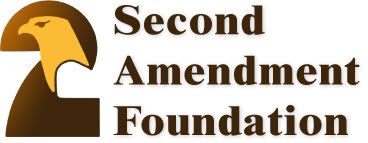
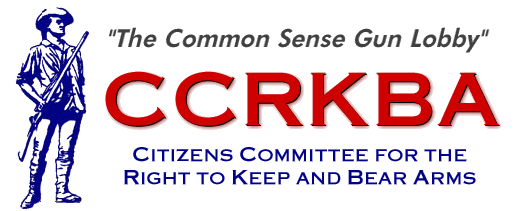

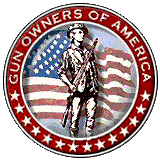






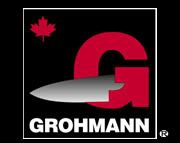
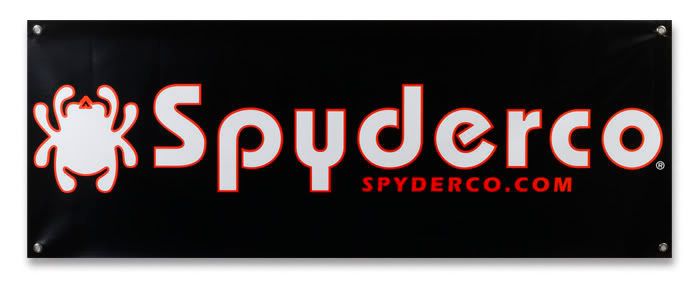

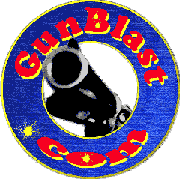








No comments:
Post a Comment